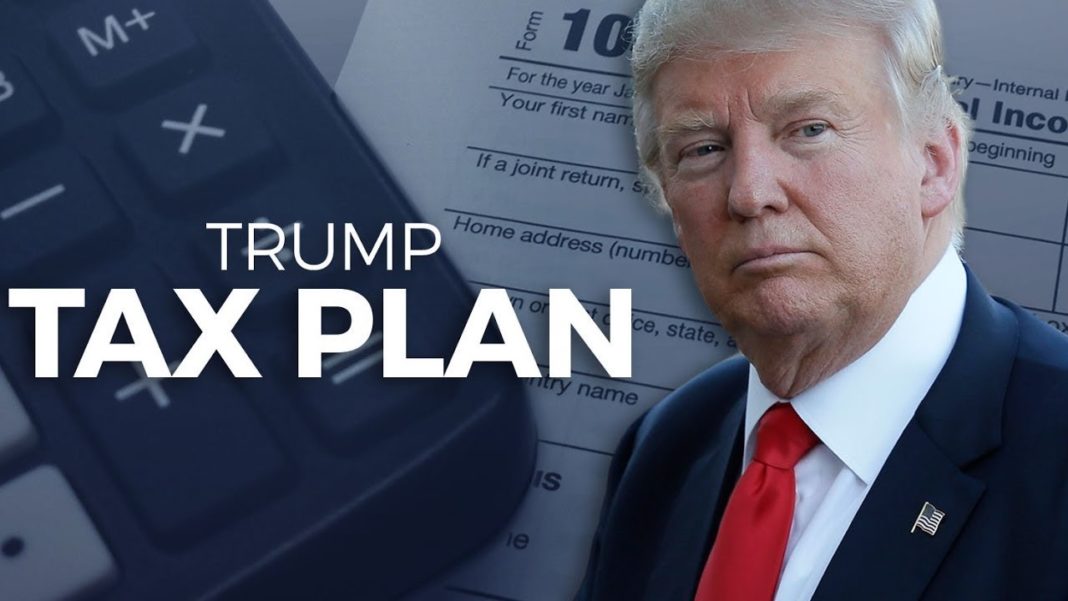While trying to advocate his tax-reform proposal, President Trump insisted: “It’s not good for me. Believe me.” He shouldn’t have said that.
His statement offered an easy target for the plan’s opponents, who promptly howled that his nine-page framework is a handout to the rich. “Trump’s tax plan benefits wealthy, including Trump,” cried a New York Times headline. The president also missed the point. Trump’s plan is right for him — and it’s good for the rest of America, too.
Trump’s framework will improve life for everyone: It offers direct benefits to the middle-class, encourages economic activity, and reduces the time citizens will spend paying taxes. It looks for long-run solutions and recognizes that the economy is a dynamic market in which tax cuts have ripple effects.
Lowering Business Expenses Helps All Who Work or Buy
Perhaps the most significant and controversial aspect of Trump’s plan is its recognition that boons for business help people of all income levels. The program caps the small-business income tax at 25 percent, allows businesses to write off capital investments as expenses, and cuts the corporate tax rate to 20 percent from its current 35 percent (the highest in the developed world).
Cutting business taxes helps ordinary people. Businesses aren’t faceless abstractions: They’re owned by people, who hire people, who together produce goods and services that help people of all income levels. Businesses pass the costs of taxes to employees and customers. More than 75 percent of corporate taxes falls on workers in the form of lower wages, according to the Heritage Foundation, a conservative think tank.
Cutting the corporate tax rate creates the right incentives: It encourages businesses to come to the United States or stay here, and it reduces incentives for tax evasion. In the long run, the benefits of these policies reach middle- and lower-classes through higher wages, increased employment, and better products. An analysis by the Tax Foundation found that the standalone effect of cutting the corporate rate to 20 percent could lead to 3.4 percent growth in gross domestic product, $3 trillion in additional capital, and a 2.9 percent rise in wages over ten years.
Trump’s framework offers more direct benefits to the middle class, too. It doubles the standard deduction and promises to increase the child tax credit. It vows that congressional committees will work on “additional measures” to relieve the middle-class tax burden, and claims to create incentives for work, higher education, and retirement security. Eliminating the death tax on property and lowering income taxes across the board means the Trump plan will benefit the wealthy as well (although reducing the death tax will also help others, like farmers).
Why It Doesn’t Matter if Rich People Get Cuts, Too
Now, a Tax Policy Center report released Friday predicted that under Trump’s plan the wealthiest 1 percent would face the most significant tax reduction of 5.7 percent, while everyone else would get no more than a 1.4 percent cut. Plus, it claimed, the top 1 percent of income earners would pay an even lower percentage of all income taxes than they do now. But these are no grounds for criticism.
“It is impossible to cut income taxes and not reduce taxes on the upper half of the income distribution,” said Hillsdale College Professor of Economics Gary Wolfram, noting that the top 50 percent of income earners pay 98 percent of all income taxes.
More critical, lightening the tax burden on the wealthy is only a problem for those with a zero-sum mentality who believe taxes are a way to divvy up a pie. That’s not an accurate view of the economy. Lower taxes for the wealthy don’t hurt the middle class. To the contrary, it promotes upward mobility and stimulates growth as the wealthy invest and spend their income. By reducing taxes on the wealthy, Trump’s tax plan can spark innovation that will raise standards of living for the poor; Wolfram said: “Our concern should not be how rich are the rich, but how rich are the poor.”
By simplifying the tax code, slashing its seven brackets to three (with room for a fourth) and cutting out itemized deductions, Trump’s plan will give people time back — a monetary gain in itself for a nation estimated to spend billions of hours filing taxes. The program also takes out state and local deductions, which encourage states to increase taxes and redistribute wealth from low- to high-tax states, Wolfram pointed out.
As Congress fine-tunes the plan, it’ll be time to critique specific policies and implications — like an increased budget deficit of $2 trillion over ten years, as some estimate. But as a framework, Trump’s proposal is a good one, promoting work and economic activity and reducing undue burdens on American citizens.
“This isn’t about me,” Trump should have said. “This plan will benefit me because it benefits everyone in America.”





